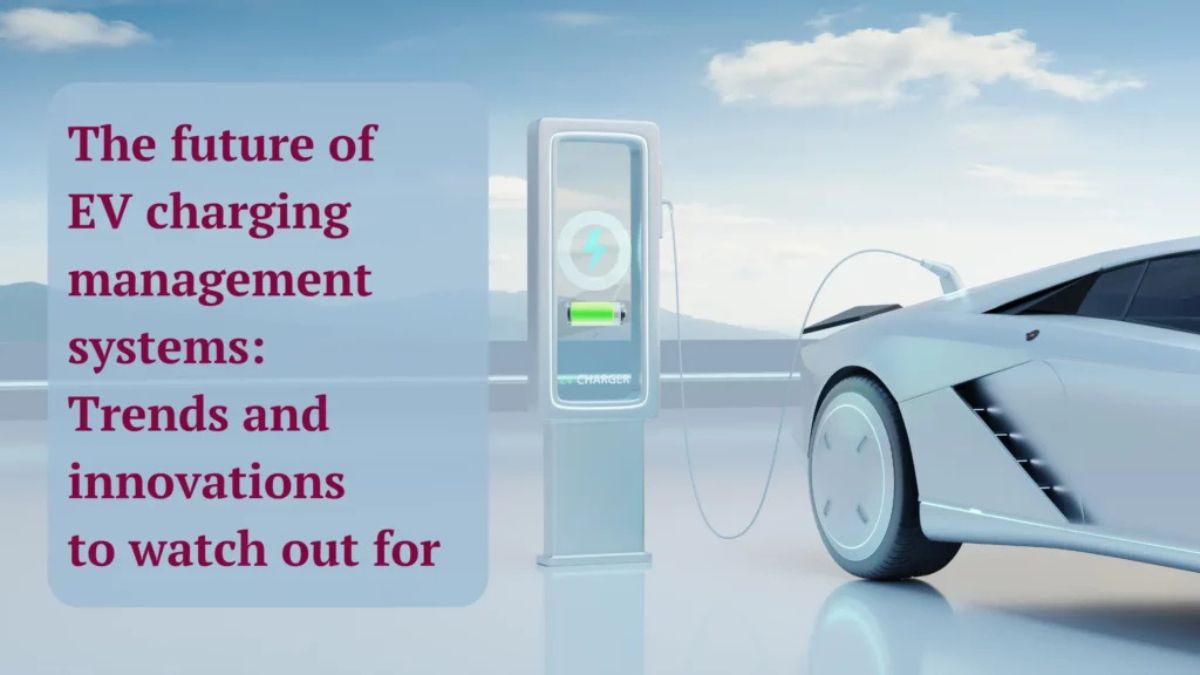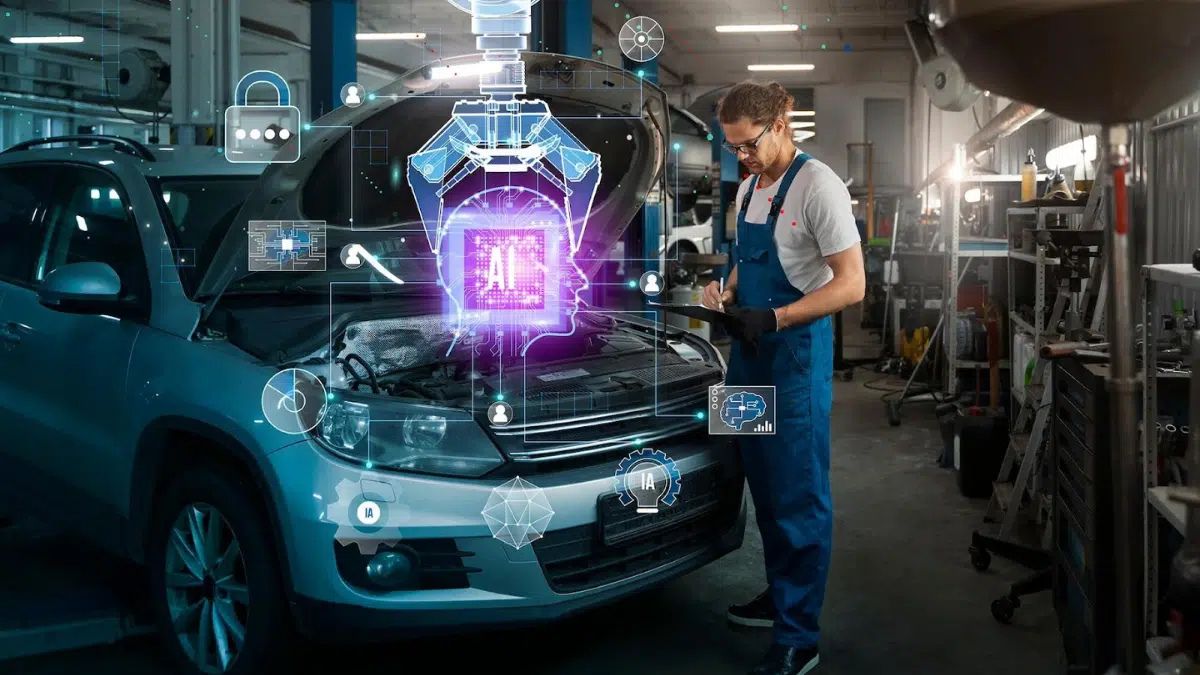AUTOMOTIVE
The Future of Electric Vehicle Charging: Trends and Innovations to Watch

Introduction: Charging Forward
Electric vehicles (EVs) are swiftly transitioning from niche to necessity as consumers seek sustainable alternatives to traditional, fossil-fuel-powered transportation. This rapid adoption has sparked significant advancements in charging technology, which is crucial for supporting widespread EV adoption. An integral player in this space, EV solutions by Delta Electronics, exemplifies the strides made to innovate and improve the accessibility of charging infrastructure. By prioritizing efficiency and user-friendly solutions, new developments in charging technology are set to make electric vehicle ownership more appealing, aligning with global efforts to reduce carbon emissions and combat climate change.
Current Trends in EV Charging
The electric vehicle landscape is transforming, driven by emerging trends in charging technology. The expansion of fast charging stations stands at the forefront, offering solutions that drastically reduce the time needed to recharge an EV. This capability is vital for long-haul travelers, as it alleviates the concern of being sidelined for lengthy periods. According to the industry analysis by Inside EVs, developing and deploying charging stations capable of delivering an 80% charge in under 30 minutes is pivotal in making electric vehicles practical for everyday use. Collaborative efforts among automakers, tech companies, and energy providers accentuate this momentum. Their collective aim is to turn fast charging from a luxury to a widespread standard, ensuring that EV recharging can become as routine as a quick pit stop for fuel.
The Role of Renewable Energy
As the world gravitates towards green energy solutions, integrating renewable resources into EV charging presents significant environmental and economic advantages. Harnessing solar and wind energy reduces reliance on fossil fuels and allows for more sustainable charging infrastructures. Newly constructed charging stations equipped with solar panels exemplify how clean energy can be captured and stored to power vehicles directly, without the intermediate step of drawing from traditional power grids. Such installations epitomize the potential of renewable energy to transform not just the transportation sector but wider industrial practices, engendering a ripple effect that could lead to broader adoption of renewable resources across various sectors. With the cost of renewable energy plummeting, these integrated solutions are becoming more economically viable, providing a dual benefit of cost savings and reduced environmental impact over time.
Smart Charging Solutions
As electricity grids face increasing pressure from higher energy demands, smart charging solutions are emerging as a vital evolution in EV infrastructure. These advanced systems utilize smart algorithms and connected devices to efficiently manage energy consumption, offering benefits for consumers and the broader electricity grid. By using data-driven insights and cutting-edge technology, smart charging platforms optimize when and how vehicles are charged, ensuring energy is drawn during periods of low demand, which helps to balance the load on the grid. The potential of smart charging to enhance efficiency is underscored in studies by the U.S. Department of Energy, highlighting its critical role in future energy strategy. Smart charging enhances grid stability, mitigating the risk of outages, and offers cost savings to EV owners through variable pricing models that reward off-peak energy use.
Innovations in Wireless Charging
While wireless charging might sound futuristic, it represents a tangible next step in EV technology. This innovation circumvents the need for physical connectors, promising a seamless, cable-free charging solution. The technology is being tested in various pilot projects where vehicles can charge wirelessly while parked or in motion over specially equipped roadways. The convenience and potential ubiquity of wireless charging could lure more consumers towards EVs, knowing they can recharge simply by parking their cars. As development progresses, wireless charging is anticipated to become an integral component of urban planning, potentially embedded in roads, parking lots, and even residential driveways, significantly transforming our interaction with our vehicles.
Policy and Infrastructure Development
Governments around the world recognize the importance of robust EV policies and infrastructure to foster broader adoption. Incentives such as tax rebates for purchasing electric vehicles or subsidies for home charging installations are pivotal in lowering the entry barrier for potential EV owners. Furthermore, strategic investments in public charging networks ensure that EVs remain a practical option for urban and rural residents. These policies encourage consumers to transition to electric vehicles and stimulate job growth within the green energy and technology sectors as nations strive to meet ambitious emissions reduction targets and lead toward a sustainable future.
Challenges and Considerations
Despite the optimistic trajectory, the EV charging sector faces tangible challenges that must be addressed to sustain momentum. High infrastructure costs remain a significant barrier, particularly in developing regions or areas with lower demand. The lack of universal charging standards can also lead to compatibility issues, frustrating consumers and potentially stalling growth. Overcoming these obstacles necessitates an ongoing dialogue among automakers, policymakers, and technology developers to establish unified standards and strategies. Furthermore, education and awareness campaigns are essential for dispelling misconceptions about electric vehicles, encouraging more consumers to switch away from traditional gasoline-powered vehicles.
Conclusion: The Road Ahead
As we look to the future, the prospects for electric vehicle charging remain overwhelmingly positive. Through technological innovation and strategic policy development, the barriers to widespread EV adoption are gradually dismantled. The transition presents unprecedented opportunities to reduce greenhouse gas emissions and achieve a more sustainable future as fast and smart charging infrastructures become the norm. By staying informed about these trends and the advancements, consumers, businesses, and policymakers can ensure they are prepared to embrace the electric revolution and contribute to a cleaner, more sustainable world.
AUTOMOTIVE
What To Do If Your Airbag Fails During A Car Crash

Facing an airbag failure during a car crash can cause distress and confusion. Stay calm and focus on your safety first. It’s crucial to check for any injuries immediately. Call emergency services if needed. After ensuring your well-being, consider the next steps. Document the scene, capturing photos of the car’s interior and exterior. This evidence can assist in understanding what went wrong. If possible, gather witness information, as their accounts may be helpful later. Consult a Car accident lawyer to understand your rights. They can help navigate legal processes and determine if there’s a case against the manufacturer. Remember, time is of the essence. Reporting the incident to your insurance company promptly can aid in covering any damages. Additionally, having your car inspected by a professional can identify any issues that need addressing. Taking these steps can help manage the aftermath effectively and keep you protected.
Immediate Actions To Take
Ensuring your safety and that of others is the first priority. Turn on your hazard lights to alert other drivers. If you can move the vehicle, pull over safely to prevent further risks. Check yourself and passengers for injuries. Call 911 if anyone needs medical care. Even if everyone appears unhurt, it’s best to seek a professional medical evaluation since some injuries are not immediately obvious.
Gathering Information
Collect details that help explain the event. Take clear photos of your vehicle from multiple angles. Capture images of the dashboard to show the airbag status, both before and after the crash. If there are witnesses, ask for their contact details. Their statements may provide valuable perspectives. Also, note any weather or road conditions that might have contributed to the accident.
Understanding Airbag Failures
Airbag failures can happen for several reasons, such as sensor issues, electrical faults, or defective parts. Understanding these causes is important for addressing the problem. Reviewing your car’s maintenance records can reveal if any recalls or repairs might relate to the failure. You can also check the National Highway Traffic Safety Administration (NHTSA) website for relevant safety recalls.
Data Table: Common Airbag Failure Causes
| Cause | Description | Preventive Measures |
| Sensor Malfunction | Sensors fail to detect impact | Regular vehicle checks |
| Electrical Issues | Faulty wiring or connections | Professional inspections |
| Defective Parts | Faulty manufacturing | Check for recalls |
Insurance and Legal Considerations
Report the crash to your insurance provider quickly. They guide you on coverage and claims. Insurance may cover repairs or medical bills. Also, explore if legal action is needed. Consulting a car accident lawyer helps clarify your rights and the possibility of a case against the airbag manufacturer. Legal experts understand the intricacies of product liability, which can be critical in holding manufacturers accountable.
Vehicle Inspection and Repair
After the crash, get your car inspected by a qualified mechanic. They can determine the cause of the airbag failure and document their findings. This inspection helps in processing insurance claims or legal actions. If a repair is needed, ensure a certified professional completes it to avoid future issues.
Prevention Tips
- Stay updated on vehicle recalls through the NHTSA Recalls page.
- Schedule regular vehicle maintenance.
- Have professionals inspect your airbag systems.
Conclusion
Airbag failures require quick thinking and action. By following these steps, you address immediate safety concerns and protect your interests moving forward. The road to resolution involves documentation, understanding causes, and seeking legal advice when necessary. Stay informed and proactive to prevent such incidents in the future, ensuring your safety on the road.
AUTOMOTIVE
The Future of Vehicle Customization: Transforming Autos for Practicality and Style

Vehicle customization stands as a testament to human creativity and technological advancement. Whether undertaking minor aesthetic tweaks or undertaking major performance overhauls, customization offers car owners a chance to inject personality and practicality into their vehicles. The services available through Tcsupfitting.com exemplify this trend by providing specialized vehicle modifications catering to the unique requirements of drivers.
The practice of customizing vehicles dates back decades and has evolved significantly over time. In its early days, customization was primarily focused on performance enhancements. Today, it encompasses a wide array of modifications that range from visual upgrades to the integration of cutting-edge technologies. As the future of vehicle customization unfolds, it continues to expand its scope and impact, offering car enthusiasts countless opportunities to personalize their rides.
What Drives the Rise in Customization?
The surge in vehicle customization can be attributed to multiple factors, chief among them being the consumer’s desire for uniqueness and personalization. In a world where individuality is celebrated, car owners often seek to express their identities through their vehicles. This urge to stand out spurs the demand for custom modifications, transforming ordinary cars into extraordinary manifestations of personal taste and style.
Moreover, the rise of the DIY culture significantly contributes to this trend. Enthusiasts currently have access to a wealth of online resources, such as video tutorials and detailed guides, which empower them to confidently undertake customizations. The availability of safety guidelines from reputable sources further ensures that these modifications are carried out with utmost care, prioritizing both creativity and safety.
Popular Customization Trends
Within the realm of customization, several trends have emerged as popular choices among car owners. Aesthetic modifications, such as custom wraps, decals, and unique paint finishes, allow drivers to transform the appearance of their vehicles. These visual enhancements serve as a canvas for self-expression, turning heads on every street corner.
Performance-oriented customizations remain a favorite among enthusiasts who crave speed and power. Upgrades like turbochargers, performance exhaust systems, and suspension kits enhance a vehicle’s capabilities, providing thrilling driving experiences. Additionally, the utilization of smart technologies and advanced systems has become increasingly sought after, seamlessly merging modern conveniences with traditional automotive functionalities.
Safety Tips When Customizing Your Vehicle
In the pursuit of creating a custom masterpiece, ensuring safety is paramount. Vehicle owners must adhere to safety standards and regulations when planning modifications. It is essential to consult experts and rely on reliable resources, such as the National Highway Traffic Safety Administration (NHTSA), which provides valuable insights into safe customization practices.
Moreover, maintaining the structural integrity of the vehicle is crucial. Care must be taken to ensure that essential features such as airbags and brakes remain functional after modifications. By prioritizing safety, enthusiasts can enjoy the benefits of their customizations while minimizing potential risks.
The Role of Technology in Customization
Advancements in technology have ushered new horizons for vehicle customization, offering tools and platforms that make modifications more sophisticated and accessible. From 3D modeling software to virtual reality applications, technology has enabled enthusiasts to visualize and implement their ideas with unprecedented precision and creativity.
Additionally, mobile apps and online communities foster collaboration and knowledge-sharing, allowing customizers to exchange ideas, access expert advice, and source custom parts. This digital ecosystem has not only democratized customization but also inspired a new generation of innovators to push the boundaries of what’s possible in the automotive world.
Customization for Specific Needs
Vehicle customization is not limited to aesthetics or performance; it also addresses specific needs across various lifestyles and industries. Off-road enthusiasts, for instance, may opt for enhancements such as skid plates, winches, and lifted suspension systems to conquer rugged terrains.
On the other hand, commercial vehicles benefit from custom solutions tailored to their purposes. This could include installing specialized storage systems or implementing cutting-edge tracking technologies to optimize efficiency. The adaptability of vehicle customization ensures that vehicles can be tailored to address the unique needs and demands of their owners, enhancing convenience and utility.
Environmental Impact and Sustainability
In recent years, there has been a growing emphasis on eco-friendly customization practices. As awareness of environmental conservation increases, car enthusiasts are opting for sustainable materials in their modifications. Interior upgrades made from recycled materials and eco-conscious paint processes are gaining traction as environmentally responsible choices.
Additionally, electric vehicle (EV) modifications represent a significant leap towards sustainability. Enthusiasts are increasingly interested in retrofitting traditional cars with electric drivetrains or incorporating hybrid technologies, making strides in reducing their environmental footprint while enjoying the benefits of customization.
Conclusion and Final Thoughts
The realm of vehicle customization is a dynamic and ever-evolving field driven by a blend of innovation, creativity, and consumer desires. Whether seeking to boost a vehicle’s performance or simply express one’s personality, the possibilities in customization are as vast as they are exciting.
With careful planning and a keen eye for detail, car owners can harness the power of customization to create vehicles that not only reflect their individuality but also cater to their practical needs. As technology continues to advance and eco-friendly practices take center stage, the future of personalized autos promises to be both exhilarating and sustainable.
AUTOMOTIVE
Warning Signs Your Car Might Be Headed for a Breakdown

Introduction
Your car is more than just a means of transportation; it’s an integral part of your daily life. With this reliance, ensuring your vehicle remains in top condition is essential. Often, cars give out warning signs long before a major breakdown occurs, allowing you to address issues early on. Awareness of these warning indicators guarantees your driving safety and helps you save money and worry. By identifying minor problems early, you can maintain your car’s smooth operation and significantly increase its lifespan.
Strange Noises
One of the most common indicators that your car might be headed for a breakdown is unusual noises. If you hear squealing when you brake, knocking sounds from the engine, or grinding when shifting gears, it’s time to pay attention. These sounds often signal issues with brake pads, the engine, or the transmission. A professional auto repair shop Apopka FL, can diagnose these problems quickly and provide the necessary repairs. Hiring experts guarantees that the work is done correctly, unlike do-it-yourself projects that risk causing more damage.
Dashboard Warning Lights
The dashboard warning lights are your car’s way of crying out for help. While it might be tempting to ignore these lights, as long as your vehicle seems to run fine, they indicate potential problems that need addressing. Whether it’s the check engine, oil, or brake warning light, each flashes as a sign that your vehicle needs attention. Ignoring them can lead to exacerbated issues, potentially resulting in extensive damage. Seeking assistance from qualified technicians is crucial to preserving your car’s functionality and keeping repair costs low.
Leaking Fluids
Your car relies on various fluids to keep its components working smoothly—from engine oil to coolant and transmission fluid. If you notice puddles or droplets under your vehicle, it’s a clear sign that something may be amiss. Different fluids have distinct colors and consistencies, helping you identify the type of leak. Leakages often suggest worn seals or loose components, which require professional repair. Regular checks and professional maintenance can catch leaks early, preventing damage and preserving vehicle performance.
Unusual Vibrations
Feeling unusual vibrations while driving can be disconcerting and indicate underlying mechanical issues. They might stem from misaligned wheels, unbalanced tires, or problems with the suspension system. These issues can worsen if left unattended, affecting other parts and leading to costly repairs. Professional inspections can diagnose and resolve the causes of vibrations, ensuring everything is perfectly aligned for a smooth ride. By addressing vibrations early, you enhance overall vehicle safety and performance.
Decreased Performance
Is your car not accelerating like it used to, or perhaps it struggles when climbing hills? Decreased performance can result from clogged filters, engine troubles, or transmission problems. This decline affects your driving experience and fuel efficiency, potentially increasing your costs at the pump. Experienced auto repair technicians can pinpoint the root causes and efficiently restore your vehicle’s performance. Proper maintenance can thus improve both the drivability and longevity of your car.
Smoke or Fumes
If you notice smoke or strange fumes coming from your car, it’s a major red flag. Blue smoke may indicate oil burning in the engine, while white smoke could mean coolant leakage. Black smoke generally means that the engine is burning too much fuel. These problems must be addressed immediately to prevent significant damage or dangerous driving circumstances. Professionals have the equipment and know-how to correctly identify and resolve these issues to ensure your car operates safely and effectively.
Unresponsive Brakes
The most essential safety component of any car is the brakes. It’s critical to have them checked immediately if you notice a spongy brake pedal, increased stopping distances, or odd noises when braking. These signs point to a potential problem with your braking system. Brake problems can worsen quickly, despite the temptation to put off repairs if symptoms seem mild. To keep you and your passengers safe, a reputable auto repair shop will ensure your braking system operates at peak efficiency.
Conclusion
Attention to and acting on your car’s signals is key to preventing breakdowns and costly repairs. From listening to strange noises to monitoring dashboard warnings, staying vigilant ensures your vehicle remains in optimal condition. Routine inspections and maintenance performed by professional technicians guarantee that even minor issues are addressed before escalating into significant problems. Ultimately, prioritizing your car’s health through professional care offers peace of mind, safety, and, ultimately, more miles on the road.
-

 BLOG1 year ago
BLOG1 year agoATFBooru: A Hub for Animated Art and Community
-

 CONSTRUCTION1 year ago
CONSTRUCTION1 year agoBuilding a Home Gym in Your Basement (7 Key Renovation Tips)
-

 BLOG1 year ago
BLOG1 year agoFictionmania: A Deep Dive into the World of Transformative Stories
-

 GAMES1 year ago
GAMES1 year agoSnow Rider 3D: Unblocked Tips and Tricks for Gamers
-

 BLOG12 months ago
BLOG12 months agoGIFHQ: A Comprehensive Guide
-

 BLOG1 year ago
BLOG1 year agoVincent herbert new wife: A Detailed Overview
-

 BUSINESS1 year ago
BUSINESS1 year agoInvestiit.com Tips: A Comprehensive Guide for Smart Investing
-

 LIFESTYLE12 months ago
LIFESTYLE12 months agoAchieve Elegance with Chic Blue Formal Dresses and Redken Professional Hair Care for All Hair Types
